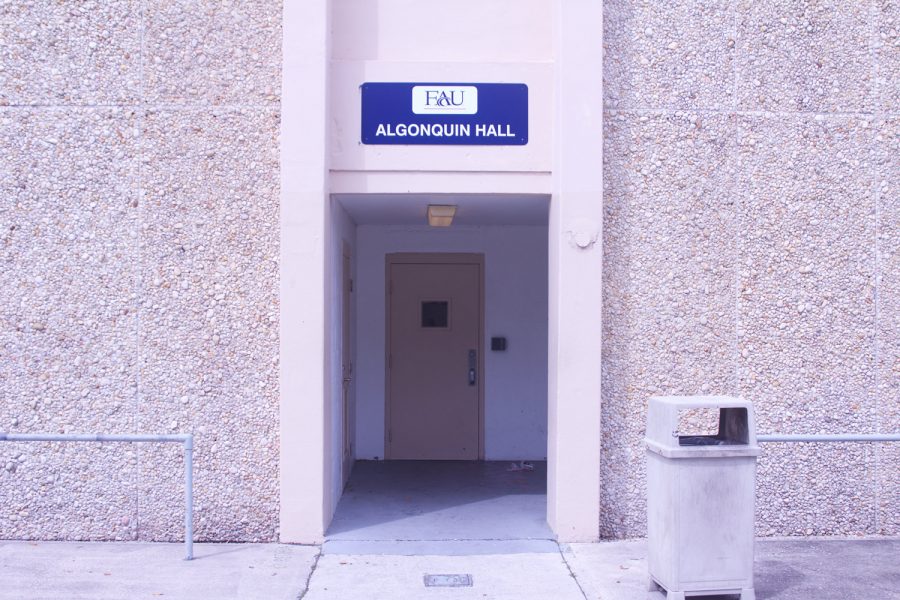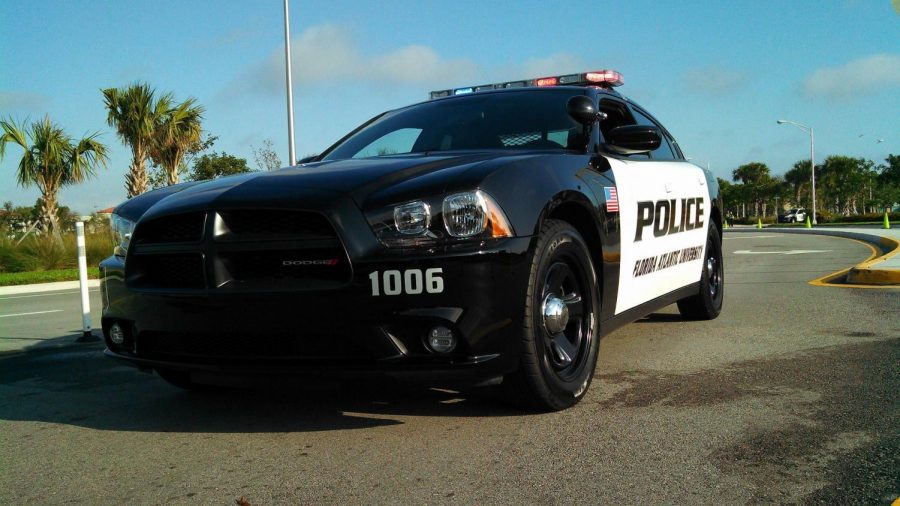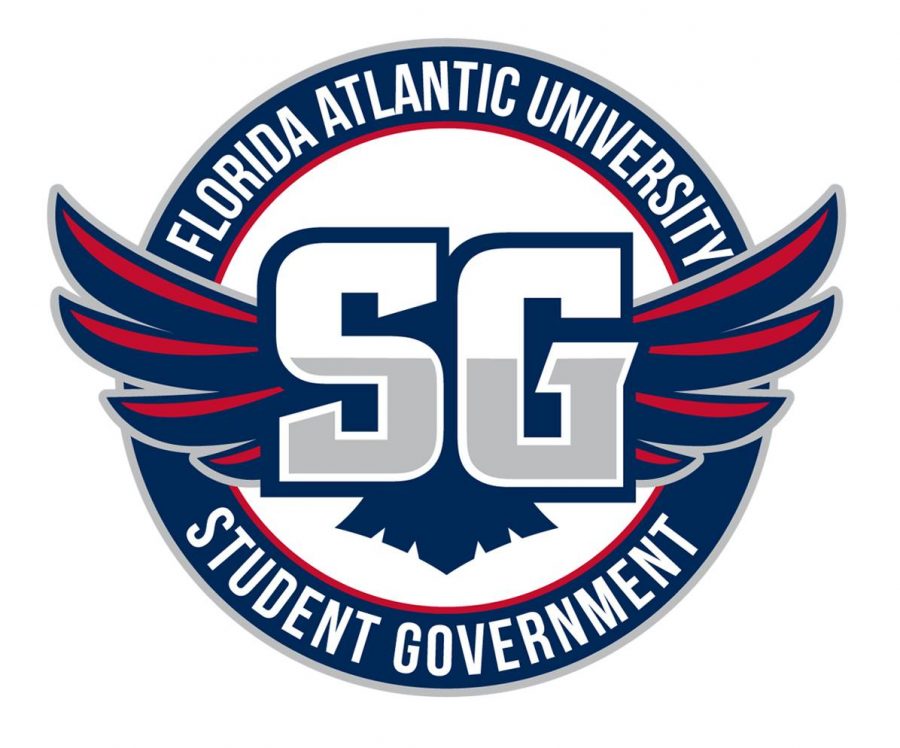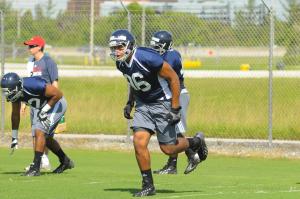
Each year, FAU reloads its roster with new talent and fresh faces, securing a plethora of incoming players from the high school ranks.
But before the Owls’ latest additions take the field to begin running, throwing, catching and tackling, the several month-long recruiting process must first be endured.
This process, headed by recruiting coordinator Jeff Sims and FAU’s coaching staff, involves intense scouting, an intricate breakdown of game film and a lot of legwork.
Sims learned the latter point the hard way.
During this past recruiting season, FAU lost out on a commitment from a defensive tackle. With a glaring need at the position, they turned their attention to Jeremy Faulk, who they’d heard little of. Sims, who was in Jacksonville, actually had to go to a public library to get internet and watch film of Faulk.
Sims raced to meet Faulk at his high school, Palatka High, which was an hour and a half away. He got there, but just missed Faulk, who had left to take his little brother home. A disappointed Sims drove back to Jacksonville, but as soon as he arrived, received a call from Faulk saying he wanted to meet. Sims turned around, went to Palatka for a second time and got his man.
“I talked to him and got him excited about FAU,” Sims said. “The next weekend, he came to visit and committed to us.”
[divider type=”thin”]
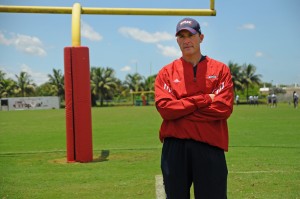
Sims, who’s entering his second full season with the Owls, helps sifts through the hundreds of Division 1-eligible athletes. His goal is to find the top 25, the maximum number of scholarships allowed per academic year.
Fortunately for Sims, Florida is ripe with talent, making it an easy –– and even enjoyable — task.
“I’d describe it as fun,” Sims said. “The difference between recruiting in Florida and recruiting in other states is like going to a restaurant where you can order one meal or going to a restaurant where there’s a buffet.”
Fun and extremely thorough.
Sims estimates that, in Florida alone, 311 Division 1 players are signed annually, divided amongst the state’s seven regions. FAU employs area coaches to specifically cover each region, which includes about 80 schools. After accumulating game film on all the senior players from those schools, a grading system goes into effect for every prospect:
-
A –– “no-brainer,” “slam-dunk” recruit
-
B –– offerable prospect and D1-caliber athlete
-
C –– more information/tape is needed
-
D –– unlikely to be offered
- F –– rejected
All A and B prospects are forwarded to the respective position coaches, who assign their own grades. Those who continue to grade out with A’s and B’s are then sent to the offensive and defensive staffs for further evaluation.
From there, the procedure shifts from football acumen to extensive background checks, with an emphasis on grades, character and, perhaps most importantly, a high-interest level in FAU.
“Let’s say a guy is a great football player and has great grades,” Sims explained. “If you go talk to him and he has no interest in Florida Atlantic, it’s a waste of time and energy. You want to have a guy that’s high-fiving people when he’s selected by Florida Atlantic. You want to have a guy that thinks this is the greatest place in America and knows he can make it here.”
Cre’von LeBlanc knew almost immediately.
One of Sims’ first recruits and a native of Belle Glade, Fl., LeBlanc spurned an offer from Marshall for the chance to stay local.
“The [FAU] coaches just made me feel at home,” LeBlanc, a sophomore defensive back, said. “They’re honest with you and behind you 100 percent. They really made me feel wanted and to be part of a program that’s on the rise.”
Florida is Sims’ “first, second, and third” favorite place to scout. And though he and the Owls’ coaches search all over the state, there’s one specific locale of note –– the I-10 corridor, located in the panhandle.
This year, FAU recruited 10 players from the I-10 region, making up what both Sims and Owls Head Coach Carl Pelini have dubbed the best recruiting class in school history.
“What we have found is that corridor has a lot of interest in Florida Atlantic,” Sims said. “Those guys [in the I-10] are really excited about the opportunity to come south and be a part of what’s going on at Florida Atlantic.”
[divider type=”thin”]
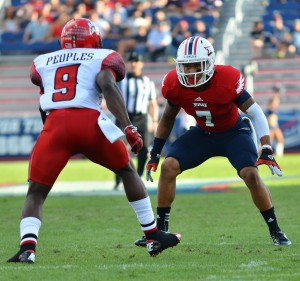
It may be gratifying for coaches to land the players they’re seeking, but getting them to commit involves much more than just making a few phone calls.
Often times, like in the case of Faulk, Sims or his fellow coaches have to hit the road and personally visit the homes of their intended targets. The objective of the trips are to show FAU’s dedication toward its recruitment and deliver a worthwhile pitch to prospects and their families.
Sims describes FAU’s pitch as one that’s centered around support and success.
“Here at FAU, you have an opportunity to be a part of a family,” he said. “Not only are you going to have great coaches and a great university, but your mom’s going to see you play, your uncle’s going to see your play, your high school coaches are going to see you play. The bigger support system that you have, the more successful you’re going to be in the classroom and football field.”
And it’s usually enough to seal the deal.
“When Coach Sims gave me his pitch, I wanted to come help make the team into something great,” said Trevon Coley, sophomore defensive lineman and member of the 2012 recruiting class.
In any instance, however, time is of the absolute essence. The NCAA strictly enforces its recruiting rules, allowing just one visit per week and no outgoing calls by coaches.
Situations can be maddening and times can get tough, but the Owls’ staff ultimately revels in rewarding athletes with all-inclusive scholarships –– tuition, food, living expenses, and clothes.
“We get to tell these kids that we’re bringing them to the best city in the United States, that’s one mile from the beach and is 70 degrees all the time,” Sims said. “We all feel like Santa Claus.”





